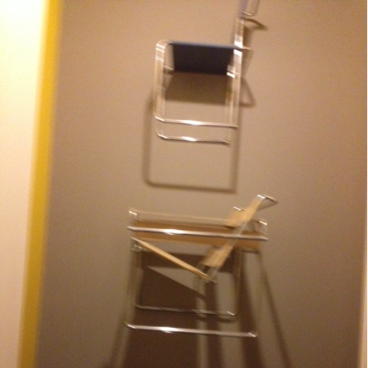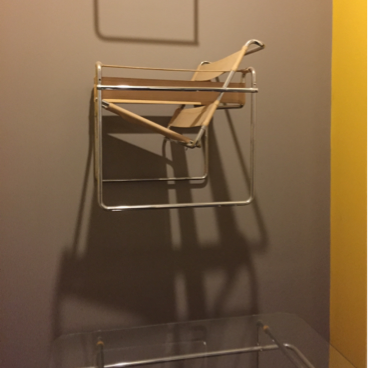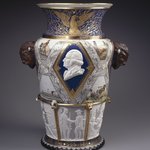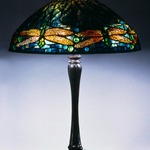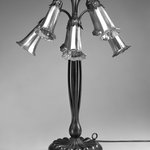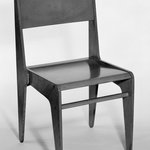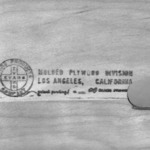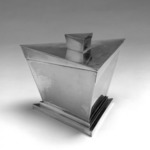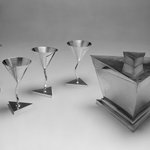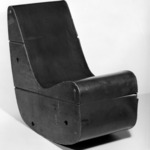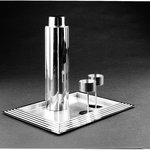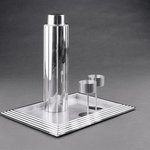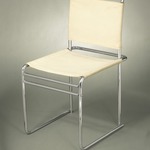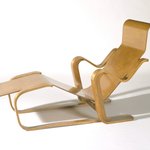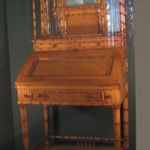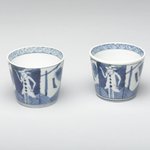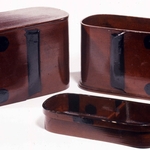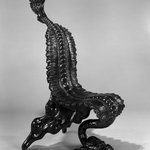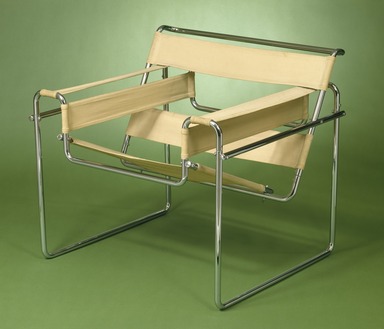
Armchair, Model B3
Decorative Arts and Design
On View: Decorative Art, 20th-Century Decorative Arts, 4th Floor
In 1925, Marcel Breuer arrived as a teacher at the Bauhaus, the German school of art, design, and architecture that had recently moved to Dessau. Soon thereafter, he purchased an Adler bicycle, whose strength, flexibility, and lightness—made possible by its tubular steel frame—greatly impressed him. That same year, Breuer began making furniture from polished tubular steel, starting with the Wassily Chair—named after his friend and fellow Bauhaus instructor, the painter Wassily Kandinsky—and extending to side chairs and tables, examples of which are on view here.
Though it lasted only from 1919 until 1933, when it closed under Nazi pressure, the Bauhaus was highly influential due in part to the number of vanguard figures who were affiliated with it. Many of them, because of the persecution of Jewish people and those deemed “degenerate,” fled Germany and established themselves in the United States. The school advocated the equality of the arts and elevation of craft, echoing the ideals of the earlier Arts and Crafts and other movements. However, in later years, the Bauhaus became more widely associated with industrial production, of which Breuer’s tubular steel furniture is among the best-known examples.
Though it lasted only from 1919 until 1933, when it closed under Nazi pressure, the Bauhaus was highly influential due in part to the number of vanguard figures who were affiliated with it. Many of them, because of the persecution of Jewish people and those deemed “degenerate,” fled Germany and established themselves in the United States. The school advocated the equality of the arts and elevation of craft, echoing the ideals of the earlier Arts and Crafts and other movements. However, in later years, the Bauhaus became more widely associated with industrial production, of which Breuer’s tubular steel furniture is among the best-known examples.
MANUFACTURER
Standard-Mobel
MEDIUM
Chromium plated tubular steel, natural canvas
DATES
ca.1927–1928
DIMENSIONS
28 3/4 × 32 3/8 × 29 1/4 in. (73 × 82.2 × 74.3 cm) (show scale)



COLLECTIONS
Decorative Arts and Design
ACCESSION NUMBER
59.236.4
CREDIT LINE
Gift of Mr. and Mrs. Alexis Zalstem-Zalessky
EXHIBITIONS
MUSEUM LOCATION
This item is on view in Decorative Art, 20th-Century Decorative Arts, 4th Floor
CAPTION
Marcel Breuer (American, born Hungary, 1902–1981). Armchair, Model B3, ca.1927–1928. Chromium plated tubular steel, natural canvas, 28 3/4 × 32 3/8 × 29 1/4 in. (73 × 82.2 × 74.3 cm). Brooklyn Museum, Gift of Mr. and Mrs. Alexis Zalstem-Zalessky, 59.236.4. Creative Commons-BY (Photo: Brooklyn Museum, 59.236.4_SL1.jpg)
IMAGE
overall, 59.236.4_SL1.jpg. Brooklyn Museum photograph
"CUR" at the beginning of an image file name means that the image was created by a curatorial staff member. These study images may be digital point-and-shoot photographs, when we don\'t yet have high-quality studio photography, or they may be scans of older negatives, slides, or photographic prints, providing historical documentation of the object.
RIGHTS STATEMENT
Creative Commons-BY
You may download and use Brooklyn Museum images of this three-dimensional work in accordance with a Creative Commons license. Fair use, as understood under the United States Copyright Act, may also apply.
Please include caption information from this page and credit the Brooklyn Museum. If you need a high resolution file, please fill out our online application form (charges apply).
For further information about copyright, we recommend resources at the United States Library of Congress, Cornell University, Copyright and Cultural Institutions: Guidelines for U.S. Libraries, Archives, and Museums, and Copyright Watch.
For more information about the Museum's rights project, including how rights types are assigned, please see our blog posts on copyright.
If you have any information regarding this work and rights to it, please contact copyright@brooklynmuseum.org.
RECORD COMPLETENESS
Not every record you will find here is complete. More information is available for some works than for others, and some entries have been updated more recently. Records are frequently reviewed and revised, and we welcome any additional information you might have.


